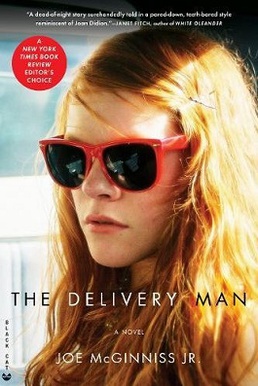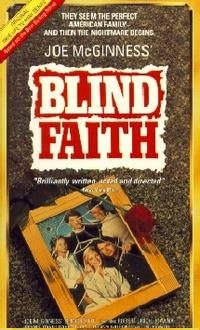Related Research Articles

Janet Clara Malcolm was an American writer, staff journalist at The New Yorker magazine, and collagist who fled antisemitic persecution in Nazi-occupied Prague just before it became impossible to escape. She was the author of Psychoanalysis: The Impossible Profession (1981), In the Freud Archives (1984), and The Journalist and the Murderer (1990). Malcolm wrote frequently about psychoanalysis and explored the relationship between journalist and subject. She was known for her prose style and for polarizing criticism of her profession, especially in her most contentious work, The Journalist and the Murderer, which has become a staple of journalism-school curricula.

Creative nonfiction is a genre of writing that uses literary styles and techniques to create factually accurate narratives. Creative nonfiction contrasts with other nonfiction, such as academic or technical writing or journalism, which are also rooted in accurate fact though not written to entertain based on prose style. Many writers view creative nonfiction as overlapping with the essay.
New Journalism is a style of news writing and journalism, developed in the 1960s and 1970s, that uses literary techniques unconventional at the time. It is characterized by a subjective perspective, a literary style reminiscent of long-form non-fiction. Using extensive imagery, reporters interpolate subjective language within facts whilst immersing themselves in the stories as they reported and wrote them. In traditional journalism, the journalist is "invisible"; facts are meant to be reported objectively.

Malcolm Timothy Gladwell is an English-born Canadian journalist, author, and public speaker. He has been a staff writer for The New Yorker since 1996. He has published seven books. He is also the host of the podcast Revisionist History and co-founder of the podcast company Pushkin Industries.
The controversy over Fatal Vision, journalist and author Joe McGinniss's best-selling 1983 true crime book, is a decades-long dispute spanning several court cases and discussed in several other published works.

Jeffrey Robert MacDonald is an American former medical doctor and United States Army captain who was convicted in August 1979 of murdering his pregnant wife and two daughters in February 1970 while serving as an Army Special Forces physician.
Joseph Quincy Mitchell was an American writer best known for his works of creative nonfiction he published in The New Yorker. His work primarily consists of character studies, where he used detailed portraits of people and events to highlight the commonplace of the world, especially in and around New York City.

Frances FitzGerald is an American journalist and historian, who is primarily known for Fire in the Lake: The Vietnamese and the Americans in Vietnam (1972), an account of the Vietnam War. It was a bestseller that won the Pulitzer Prize, Bancroft Prize, and National Book Award.
Joseph Ralph McGinniss Sr. was an American non-fiction writer and novelist.

Jim Dwyer was an American journalist and author. He was a reporter and columnist with The New York Times, and the author or co-author of six non-fiction books. A native New Yorker, Dwyer wrote columns for New York Newsday and the New York Daily News before joining the Times. He appeared in the 2012 documentary film Central Park Five and was portrayed on stage in Nora Ephron's Lucky Guy (2013). Dwyer had won the Pulitzer Prize in 1995 for his "compelling and compassionate columns about New York City" and was also a member of the New York Newsday team that won the 1992 Pulitzer for spot news reporting for coverage of a subway derailment in Manhattan.

Theodore L. Gunderson was a Federal Bureau of Investigation Special Agent In Charge and head of the Los Angeles FBI, an American author. Some of his FBI case work included the Death of Marilyn Monroe and the Assassination of John F. Kennedy. He was the author of the best-selling book How to Locate Anyone Anywhere Without Leaving Home. In later life, he researched a number of topics, notably including satanic ritual abuse.

The Delivery Man, is Joe McGinniss Jr.'s first novel, published 15 January 2008.

Isabel Wilkerson is an American journalist and the author of The Warmth of Other Suns: The Epic Story of America's Great Migration (2010) and Caste: The Origins of Our Discontents (2020). She is the first woman of African-American heritage to win the Pulitzer Prize in journalism.

Blind Faith is a 1990 NBC miniseries based on the 1989 true crime book of the same name by Joe McGinniss. It follows the 1984 case in which American businessman Robert O. Marshall was charged with the contract killing of his wife, Maria. Adapted by John Gay and directed by Paul Wendkos, the miniseries was originally broadcast in two parts with a total runtime of 190 minutes.

Evan Lionel Richard Osnos is an American journalist and author. He has been a staff writer at The New Yorker since 2008, best known for his coverage of politics and foreign affairs, in the United States and China. His 2014 book, Age of Ambition: Chasing Fortune, Truth, and Faith in the New China, won the National Book Award for nonfiction.

Comics journalism is a form of journalism that covers news or nonfiction events using the framework of comics, a combination of words and drawn images. Typically, sources are actual people featured in each story, and word balloons are actual quotes. The term "comics journalism" was coined by one of its most notable practitioners, Joe Sacco. Other terms for the practice include "graphic journalism," "comic strip journalism", "cartoon journalism", "cartoon reporting", "comics reportage", "journalistic comics", and "sketchbook reports".

A Wilderness of Error: The Trials of Jeffrey MacDonald is a book by Errol Morris, published in September 2012. It reexamines the case of Jeffrey MacDonald, the Green Beret physician accused of killing his wife and two daughters in their home in Fort Bragg on February 17, 1970, and convicted of the crime on August 29, 1979. MacDonald has been in federal prison since 1982.
Fatal Vision is a 1984 American true crime drama television miniseries directed by David Greene from a teleplay by John Gay, based on the 1983 novel of the same name by Joe McGinniss. The miniseries stars Karl Malden, Eva Marie Saint, Barry Newman, Gary Cole, and Andy Griffith. It recounts the celebrated case of Jeffrey R. MacDonald, the former Green Beret physician who was convicted of murdering his pregnant wife and their two small children.
Fatal Vision is the 1983 true crime book by Joe McGinniss which lies at the center of the Fatal Vision controversy.
Shanna Hogan was an American non-fiction author and journalist. She was best known for writing the book Picture Perfect about convicted murderer Jodi Arias.
References
- 1 2 3 Scardino, Albert. "Ethic, Reporters and The New Yorker". The New York Times . March 21, 1989.
- 1 2 McCollam, Douglas. "You Have The Right to Remain Silent". Columbia Journalism Review . January–February 2003.
- ↑ "100 Best Nonfiction « Modern Library". Archived from the original on 2012-03-06. Retrieved 2012-06-23.
- ↑ Malcolm, Janet. The Journalist and the Murderer. New York: Knopf. 1990. p. 1.
- ↑ Malcolm, Janet. "Reflections: The Journalist and the Murderer" (subscription needed). The New Yorker . March 13, 1989.
- ↑ Malcolm, p. 19.
- ↑ CBS News, 48 Hours, November 11, 2002.
- ↑ Malcolm, p. 22.
- ↑ Malcolm, p. 21.
- ↑ Malcolm, pp. 34-36.
- ↑ Malcolm, p. 223.
- ↑ Malcolm, p. 30.
- ↑ Malcolm, p. 31.
- ↑ Malcolm, p. 30.
- ↑ Malcolm, pp. 66-67, 69–70, 72. "Both in the prepared story and in his unpremeditated responses MacDonald used language that was at curious odds with his person. His language was dead, flat, soft, clichéd...I had made the same error that Stone made in marvelling at MacDonald's incapacity for rendering Tolstoyan portraits of himself and his family. MacDonald's bland dullness on tape seemed unusual to me and to Stone (and also to McGinniss, who had told me how he groaned whenever a new tape arrived from the prison) because of its contrast to the excitingly dire character of the crime for which he stood convicted...MacDonald was simply a guy like the rest of us, with nothing to offer but a tedious and improbable story about his innocence of a bad crime."
- ↑ Malcolm, pp. 28, 72–73.
- ↑ Malcolm, p. 68.
- ↑ Malcolm, p. 70.
- ↑ Malcolm, pp. 71–73.
- ↑ McGinniss, Joe. "The 1989 Epilogue to Fatal Vision". April 1989.
- ↑ Friendly, Fred W. "Was Trust Betrayed". The New York Times Book Review . February 25, 1990; also Lehmann-Haupt, Christopher. "Deception and Journalism: How Far to Go for the Story". The New York Times. February 22, 1990.
- ↑ Garner, Dwight. "A New Angle on a 1970 Murder Case". The New York Times. September 10, 2012.
- ↑ The Modern Library 100 Best